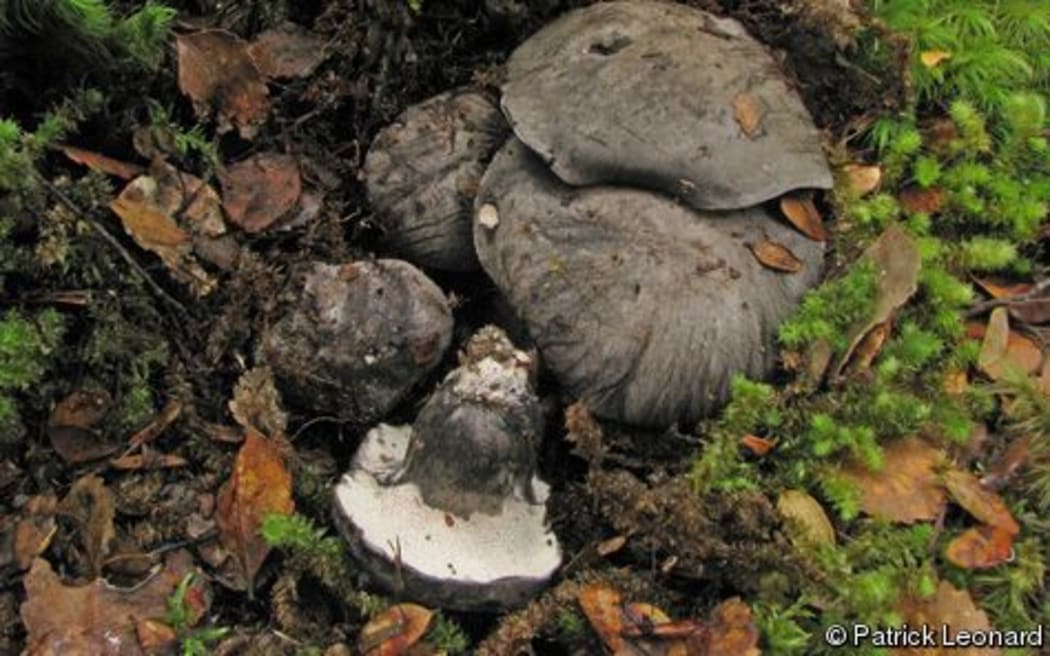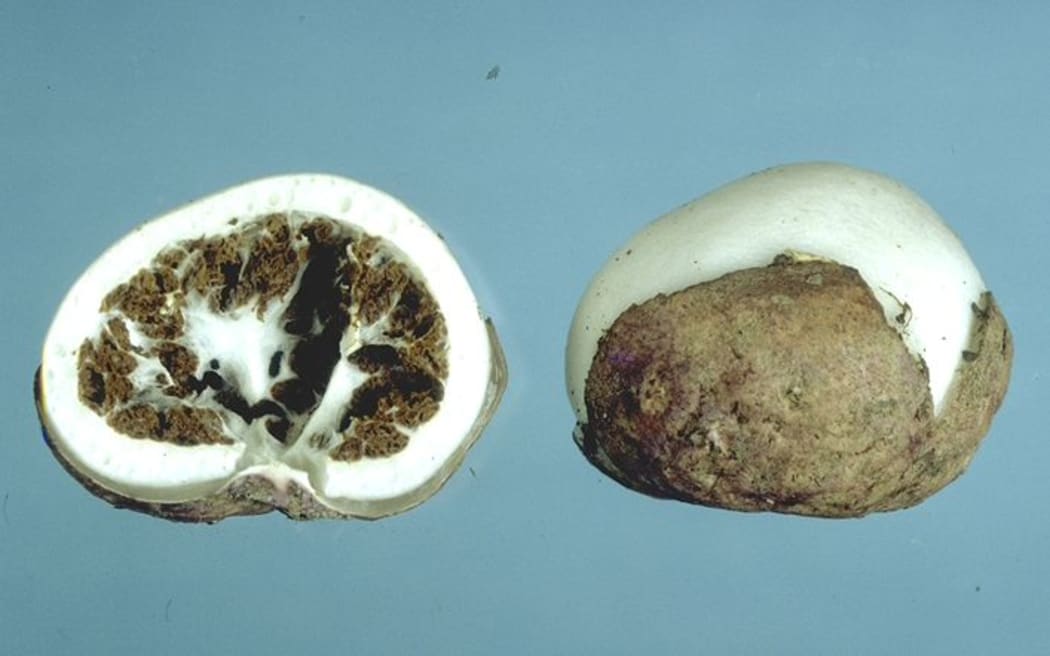Two New Zealand fungi have been added to the global Red List of threatened species, and classed as 'endangered'.

Boletopsis nothofagi Photo: Patrick Leonard
It's the first time mushrooms from this country have been put on the list, which is published by the International Union for the Conservation of Nature.
Boletopsis nothofagi, with large charcoal-grey mushrooms, occurs only in this country; and Claustula fischeri, which resembles a hard-boiled egg in a brown shell, only in New Zealand and Tasmania.
A mycologist with Landcare Research in Auckland, Peter Buchanan, said the decline of the mushroom known as Fischer's egg was a mystery.
New Zealand's mycota included many pouch and truffle-like mushroom species that, like the Claustula, appeared to have evolved to attract the flightless birds so they would disperse the spores after digestion.
However, he said the decline in the native bird population and the extinction of the moa did not seem to have caused a decline in those other mushrooms - insects and introduced mammals were still spreading the spores - so it was not clear that was a factor for the Fischer's egg.
A theory used to be that Fischer's egg had a symbiotic relationship with mānuka or kānuka, and the loss of those trees in its habitat had caused its decline.

Claustula fischeri Photo: Landcare Research
But Dr Buchanan said that had now been disproved; the fungus was saprobic, feeding on decaying plant matter and not dependent on living trees.
Though that continued the mystery, the upside was that if Claustula fischeri - last seen in 2005 - was ever found again, attempts could be made to grow it in a laboratory because a 'tree partner' was not required as previously thought.
In New Zealand the Fischer's egg had only been found at two spots: one near Gore, and one on Fringed Hill near Nelson, and Dr Buchanan said for now, preserving those forest habitats remained essential to the survival of the species.
The decline of Boletopsis nothofagi, whose only known populations are in Wellington and Nelson, is perhaps slightly less of a mystery.
Lincoln-based Landcare mycologist Jerry Cooper said the genus Boletopsis, found only in the Northern Hemisphere apart from the single New Zealand species, had a habit of fruiting only in the presence of old-growth trees; that is, waiting until its symbiotic partner was really, really old before it produced any mushrooms.
In New Zealand, Boletopsis nothofagi had a symbiotic relationship with southern beech trees, which did not live to such ripe old ages as some of the Northern Hemisphere trees.
That meant that, even without any effects of human settlement, it was at a disadvantage here.
"It's just naturally rare."
Dr Cooper said habitat preservation was all that could be done to help the endangered Boletopsis persist.

